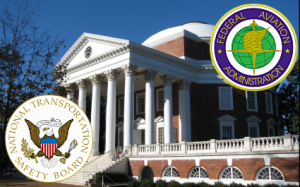On Thursday a the sUSB Expo in San Francisco, the FAA’s Jim Williams gave a presentation ‘updating’ the unmanned aerial systems community about the progress the federal administration has made towards regulating the national airspace for commercial drones. The part of his speech that got the most attention was the revelation of a near collision between a drone and a commercial airliner in March.
But this announcement overshadowed a different, important and potentially game-changing comment Williams made:
“Work is under way to implement the provisions of Section 333 of the FAA Modernization and Reform Act of 2012. This allows us to move forward with incremental UAS integration. This section of the act can only be applied to specific limited low risk uses in advance of the small UAS rule. I stress the word may as we are still evaluating this option and developing our internal processes. If we are able to leverage section 333 for low risk operations there will be economic benefits as we begin to address the pent up demand for commercial UAS operations. Companies from four industries have approached the FAA and are considering filing an exemption request that will begin the process.

These industries include, precision agriculture, film making, power line and pipeline inspections and oil and gas flare stack inspections.” Williams then goes on to describe the uses of drones in these four industries. I am not going to go into the specifics here because thats not the point and we have been talking about these applications for months. The point of this part of the speech is that there is a very real provision that could expedite the process of getting commercial drones flying for use in the above mentioned industries -without the need for a Certificate of Authorization. Section 333 reads as follows: (a) In General.–Notwithstanding any other requirement of this subtitle, and not later than 180 days after the date of enactment of this Act, the Secretary of Transportation shall determine if certain unmanned aircraft systems may operate safely in the national airspace system before completion of the plan and rulemaking required by section 332 of this Act or the guidance required by section 334 of this Act. (b) Assessment of Unmanned Aircraft Systems.–In making the determination under subsection (a), the Secretary shall determine, at a minimum–
(1) which types of unmanned aircraft systems, if any, as result of their size, weight, speed, operational capability, proximity to airports and populated areas, and operation within visual line of sight do not create a hazard to users of the national airspace system or the public or pose a threat to national security; and
(2) whether a certificate of waiver, certificate of authorization, or airworthiness certification under section 44704 of title 49, United States Code, is required for the operation of unmanned aircraft systems identified under paragraph (1).
(c) Requirements for Safe Operation.–If the Secretary determines under this section that certain unmanned aircraft systems may operate safely in the national airspace system, the Secretary shall establish requirements for the safe operation of such aircraft systems in the national airspace system. Some things to consider: Nothing is happening yet, the industries in question are still “considering” filing for the exemption. 
Alan is serial entrepreneur, active angel investor, and a drone enthusiast. He co-founded DRONELIFE.com to address the emerging commercial market for drones and drone technology. Prior to DRONELIFE.com, Alan co-founded Where.com, ThinkingScreen Media, and Nurse.com. Recently, Alan has co-founded Crowditz.com, a leader in Equity Crowdfunding Data, Analytics, and Insights. Alan can be reached at alan(at)dronelife.com
